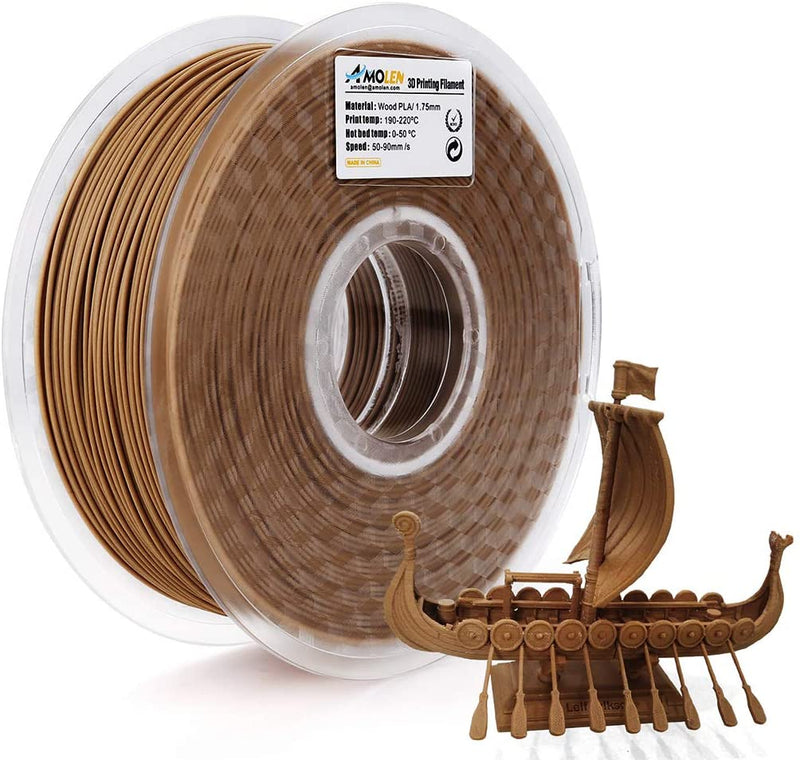Unlock the Secrets of 3D Wood Filaments: Transform Your Printing Game!
3D wood filaments are revolutionizing the world of 3D printing, capturing the imagination of hobbyists and professionals alike. Combining the versatility of traditional plastic with the aesthetic appeal of natural wood, these filaments offer a unique material that not only looks great but also feels fantastic. Made from a blend of polylactic acid (PLA) and fine wood fibers, 3D wood filaments simulate the texture and appearance of wood, making them a popular choice for various applications. In this article, we delve deep into the properties, functionality, and diverse applications of 3D wood filaments, helping you unlock the full potential of your 3D printing endeavors.

Understanding 3D Wood Filaments
3D wood filaments are a fascinating material in the additive manufacturing landscape, primarily composed of PLA combined with wood fibers. This unique composition gives these filaments their characteristic wood-like appearance while retaining the ease of use associated with traditional PLA. The wood fibers used in these filaments are often sourced from recycled wood waste, making them an eco-friendly option for environmentally conscious makers. The addition of wood fibers not only alters the filament's aesthetics but also influences its printing characteristics, providing a smooth, semi-matte finish that mimics real wood grain. Understanding the composition of 3D wood filaments is essential for achieving the best results in your printing projects.
Properties of 3D Wood Filaments
One of the standout features of 3D wood filaments is their balance of strength and aesthetic appeal. These filaments exhibit good tensile strength and durability, making them suitable for both decorative and functional prints. Unlike traditional plastic filaments, wood filaments offer a warm, natural look that can elevate the visual quality of your projects. Additionally, the unique properties of wood filaments allow for easy post-processing; they can be sanded, stained, or painted, giving creators the flexibility to achieve their desired finish. However, it's essential to note that while wood filaments are durable, they may not match the mechanical strength of some engineering-grade plastics, making them better suited for specific applications rather than high-stress components.
How 3D Wood Filaments Work
Printing with 3D wood filaments requires a few adjustments to standard 3D printing practices to achieve optimal results. It's advisable to set your 3D printer's nozzle temperature between 180°C and 220°C, as excessive heat can lead to the burning of wood fibers and a loss of texture. A slower printing speed can also help to ensure better layer adhesion and reduce the risk of clogging, a common challenge when using these materials. To prevent clogs, regular maintenance of the printer's nozzle is crucial, along with the use of a larger nozzle size (typically 0.4mm or larger) to accommodate the wood fibers. Additionally, ensuring that the filament is dry before use can minimize printing issues, as moisture can lead to bubbling and a compromised finish.
Applications of 3D Wood Filaments
The versatility of 3D wood filaments opens the door to various applications that benefit from their unique qualities. Decorative objects, such as vases, sculptures, and custom ornaments, can be made to look like genuine wood, adding a touch of elegance to any space. Furthermore, these filaments are increasingly used in furniture design, enabling designers to create prototypes and models that showcase the natural beauty of wood without the weight and cost associated with solid wood. A friend of mine recently printed a beautiful wooden phone stand using 3D wood filament, and the result was stunning; it not only looked great but was also lightweight and functional. Other creative projects include educational models and architectural prototypes, where the tactile quality of wood filaments can enhance the user experience.
Embrace the Potential of 3D Wood Filaments
In summary, 3D wood filaments present an exciting opportunity for makers looking to explore the intersection of technology and nature. With their unique composition, these filaments provide both aesthetic appeal and versatility, making them an excellent choice for various projects. By understanding their properties, printing techniques, and diverse applications, you can tap into the full potential of 3D wood filaments. Whether you're creating intricate designs or functional prototypes, experimenting with these materials can lead to innovative and creative results that enhance your 3D printing journey. So why not give 3D wood filaments a try? You might just transform your printing game!



